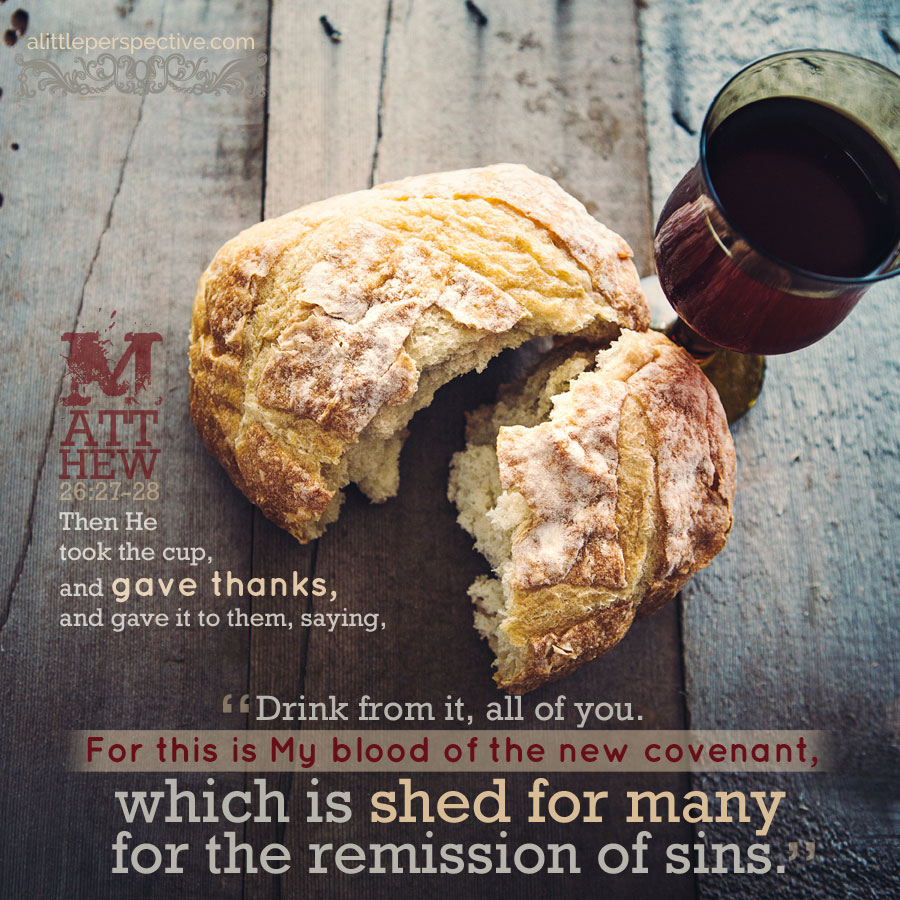Read Matthew 26 here (text coming …) or at Bible Gateway.
The central axis of the Mat 26:1-57 Chiastic Structure is:
And He took the cup, and gave thanks, and gave it to them, saying, “Drink all of it, for this is My blood of the new covenant, which is shed for many for the remission of sins.” Mat 26:27-28
What is the new covenant, according to the Hebrew Root Word teaching tool?
New is Strong’s G2537, καινος, kainos, an adjective meaning, “new.” The Septuagint translates the Hebrew chadash, Strong’s H2319, with kainos most of the time. The Hebrew means “to renew;” and its parable told by the Hebrew Root Word is of the wall (chet) separating what is within from what is without, but the door (dalet) in the wall unites the separated parties again (shin). Vine’s says of kainos:
… that which is unaccustomed or unused, not “new” in time, recent, but “new” as to form or quality, of a different nature from what is contrasted as old.
The Hebrew bears this out, as the verb is “to renew,” but the concrete object derived from the verb is “new moon,” that which hangs in the sky at the beginning of each new month. The new moon is not new in time, or of recent make, but new in form, differing from that of the old moon. The abstract concept is “newness.”
Covenant is Strong’s G1242, διαθηκη, diatheke, a noun meaning, “last will and testament.” The Septuagint translates the Hebrew beriyth, Strong’s H1285, with diatheke many times, especially here:
Behold, the days are coming, says YHVH, when I will make a new covenant with the house of Israel and with the house of Judah— not according to the covenant that I made with their fathers in the day that I took them by the hand to lead them out of the land of Egypt, My covenant which they broke, though I was a husband to them, says YHVH. But this is the covenant that I will make with the house of Israel after those days, says YHVH: I will put My law in their minds, and write it on their hearts; and I will be their God, and they shall be My people. Jer 31:31-34
Where the Hebrew phrase is chadash beriyth exactly.
The parable told by the Hebrew Root Word is of a family (bet) of heads (resh), i.e., grain, since the ripe head of a grain stalk is composed of a family of seed heads. Grain (bet + resh) is given to the ox (aleph) or cattle to fatten it for slaughter; and it is this choice animal, the fattened ox, which is used in sacrifice, either in worship, or in cutting a covenant.
The Teaching Tools are teaching that the new covenant which Yeshua made in His blood was not new in time, but the old covenant renewed, with a new form or quality. First, the blood in which it was cut was the perfect blood of the spotless Lamb which God provided for Himself. Thus it only needed to be shed once rather than day after day, and year after year. Second, the Law remains as Moses encoded it on Mount Sinai (Mat 5:17-19), but rather than being inscribed on two tablets of stone outside the man, so that obedience is a matter of a coerced will, it is inscribed on the tablets of the heart inside the man, so that obedience is a matter of second nature. The new covenant provided for the new birth (Joh 3:5), the new heart (Eze 11:19-20), and the new nature (2 Cor 5:17)!

















Leave a Reply